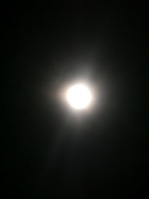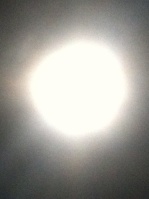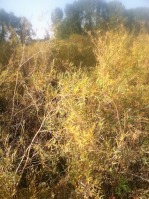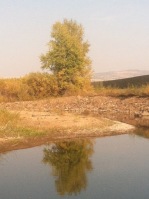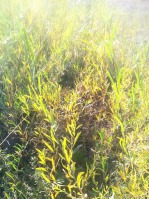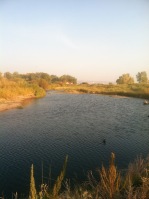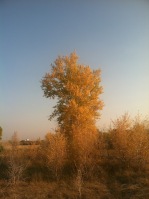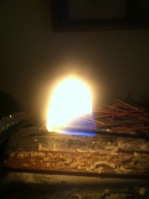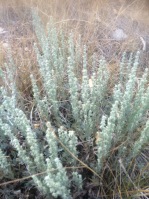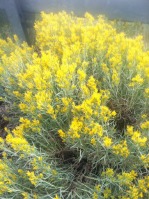יד וַיֹּאמֶר אֱלֹהִים יְהִי מְאֹרֹת בִּרְקִיעַ הַשָּׁמַיִם לְהַבְדִּיל בֵּין הַיּוֹם וּבֵין הַלָּיְלָה וְהָיוּ לְאֹתֹת וּלְמוֹעֲדִים וּלְיָמִים וְשָׁנִים
טו וְהָיוּ לִמְאוֹרֹת בִּרְקִיעַ הַשָּׁמַיִם לְהָאִיר עַל-הָאָרֶץ וַיְהִי-כֵן
14 And God said: ‘Let there be lights in the firmament of the heaven to divide the day from the night; and let them be for signs, and for seasons, and for days and years; 15 and let them be for lights in the firmament of the heaven to give light upon the earth.’
And it was so. The year passes, day by day, week by week, month by month. Tides come in, tides go out. Moons move to full and back to dark. Time passes.
According to the current Gregorian Calendar, today is the first of the year, but as I’ve said many times, different cultures each have their own new year. This year, the Chinese New Year lands on February 10th. Depending on the purpose, September 4th, January 25th, or March 12th can be considered the beginning of the new year this coming year in the Jewish calendar. In the Islamic calendar, it begins November 3rd this coming year. Some cultures begin the year on Samhain or Beltaine, or on one of the Equinoxes or Solstices. We celebrate it on January 1st in most of the Western world because of the use of the Gregorian calendar which is based on the Julian calendar, since January 1st, the Feast of Janus, was the Roman new year. It should be noted that January 1st is the 8th day from Christmas (including both end points), so is seen as the day Christ was circumcised based on a December 25th birth. However, Christmas was likely originally a Solstice celebration, December 25th being the original date given to the Solstice, before shifting moved it roughly four days back. This would make January 1st, the Feast of Janus, the eighth day from the Solstice, so properly December 28th or 29th depending on the day. We still celebrate the Feast of Janus, if you look carefully. Janus is the two faced god, one looking back, the other forward, just as we do, celebrating what happened in the last year and making resolutions for the coming year.
Much of the pagan and occult community celebrates the eight (or nine) Knots of the year, the eight Fire Festivals, or whatever name each uses, sometimes poetically called the Wheel of the Year. These are Bride’s Day/Candlemas/Imbolc, the Spring Equinox/Ostara, May Day/Roodmas/Beltane, the Summer Solstice/Midsummer/Feast of John the Baptist/Litha, Lugh’s Day/Lughnasadh/Lammas/August Eve/Feast of Augustus/Feast of Sofia, the Autumn Equinox/Michaelmas/Mabon, All Saint’s Day/All Soul’s Day/Hallowe’en/Samhain, and the Winter Solstice/Midwinter/Chistmas/Yule.
I don’t always celebrate these, but I note their passing, or, more accurately, the passing of their Tides, as these are the high tides of energy cycles throughout the year. The Tides don’t always fall on those specific days. This is because those days are pinpointed by the solar year, the solstices being the most northern and most southern movements of the sun through the sky or the shortest and longest day or night, the equinoxes being the days when day and night are equal in length, and the other four the midpoints between. But the Tides are not solar, and they aren’t lunar. If they were solar, the cross-quarters (Bride’s Day, Beltaine, Lugh’s Day, and Samhain) would have no significance. If they were lunar, there would be thirteen, not eight. Even the months, despite the origin of the name, aren’t lunar in Western calendars, for there are roughly 13 moons, but only twelve months, and originally only ten (you’ll note the names January, Janus, February, Februum, March, Mars, April, Aperire, May, Maia, June, Juno, September, Seven, October, Eight, November, Nine, and December, Ten). Neither twelve nor ten fit the moons. But twelve does fit the Zodiac, which is of course stellar, not solar or lunar. Libra was added late, with 11 constellations in the Zodiac before that, maybe ten previously at some point. You’ll also notice that the moon occults Aldebaran around the Autumn Equinox in the Southern Hemisphere. Aldebaran is the brightest star in Taurus, the Bull, and becomes visible in the Northern Hemisphere around Samhain, sinking again around Beltaine, being highest around Bride’s Day. Regulus is often occulted by the moon around the Summer Solstice. Regulus is the brightest star in Leo, the Lion, and becomes most visible in the Northern Hemisphere around Bride’s Day, and disappears around Lugh’s Day, being highest around Beltaine. Antares can be occulted by the moon during any month. It is the brightest star in Scorpio, the Scorpion, and is roughly visible from around the spring equinox to the autumn equinox, highest closest to the summer solstice. There are other stars that point to various other of the eight Knots, but I’ll leave that for a later post.
I note the passing of the Tides, and often how the solar cycles, lunar cycles, and stellar cycles land, sometimes celebrating or doing a working, sometimes just noting them. But in noting them, I often find poetry and myth can capture the essence of the Tides.
The following are my ritual poems for the major Tides over the last year, from Samhain to Samhain, showing a cycle I saw grow up throughout the year. Each poem fed the next and the next, creating a myth cycle. The dates given are the most common modern dates, or there about. Each actually spreads over three days, but the Tides of each grow before that date and fade after, and reach High Tide at different times in different places, and are also influenced by the shorter Tides of the moon and longer Tides of the sun, so the dates given are for reference only, to make the cycle more clear. The names of the Tides given are not necessarily the names everyone uses, but the ones I most commonly use in my practice.
(The Year Draws Nigh – Samhain 10/31/2011)
As darkness fall, the veil thin,
The year is drawing nigh.
Shadows lengthen, gather strength,
The year is drawing nigh.
The dead they stir, and look around,
The year is drawing nigh.
Tonight they walk, tonight they dine,
The year is drawing nigh.
The sinks down, she’s dying now,
The year is drawing nigh.
Beneath the hills, the dying sun,
The year is drawing nigh.
Hollow hills, they open wide,
The year is drawing nigh.
Faerie folk, the mighty dead,
The year is drawing nigh.
Samhain’s fires, burning bright,
The year is drawing nigh.
To dance around, in death’s embrace,
The year is drawing nigh.
Ancestors dead, some long gone,
The year is drawing nigh.
We tip a glass, we place a plate,
The year is drawing nigh.
Death stands up, tonight he reigns,
The year is drawing nigh.
In darkness strong, the dying year,
The year is drawing nigh.
The revelers grow deathly quiet,
The year is drawing nigh.
All knees bend and all tongue stilled,
The year is drawing nigh.
For Death takes all and all will come,
The year is drawing nigh.
The Gates of Death, they open wide,
The year is drawing nigh.
His face you meet, at Death’s great doors,
The year is drawing nigh.
A friend, a judge, a lover, a blade,
The year is drawing nigh.
His embrace is sweet, but deathly cold,
The year is drawing nigh.
In love he strips you, bone from bone,
The year is drawing nigh.
Nothing left, you pass beyond,
The year is drawing nigh.
The veil it parts, the doors swing wide,
The year is drawing nigh.
Your last strong breath, last orgasm,
The year is drawing nigh.
And through you go, to what’s beyond,
The year is drawing nigh.
But Death’s great doors and Life’s fair doors,
The year is drawing nigh.
What’s dead and gone, will be reborn,
The year is drawing nigh.
A new breath breathed, a new day dawns,
The year is drawing nigh.
Death to Life, he takes your hand,
The year is drawing nigh.
All is gone, but all in new,
The year is drawing nigh.
The new dawn’s sun, in the east,
The year is drawing nigh.
The cold it flees, the shadows hide,
The year is drawing nigh.
Dark Samhain’s night to new year’s light,
The year is drawing nigh.
What was dead has come again.
(The Throne of Bone – Winter Solstice 12/22/2011)
Darkest night and shortest day,
Shadows reign and darkness calls,
The shadowy figure of Death stands by,
Patiently waiting for all to fall.
Each child born will surly die,
None is spared and all know why,
At Death’s bone throne each one will come,
He needn’t search for all will come.
The sun sets earlier for half the year,
Night grows longer, shadows strive,
The year he ages as do all,
Growing weaker, growing frail.
The time draws near when he will die,
The year we’ve loved so hard to watch,
The mourners all do gather round,
For letting go is the hardest task.
With the sun, the year does set,
Sinking down into the grave,
Like each man, he bows his knee,
And presents himself at the throne of bone.
In his birth we knew he’d die,
For every beginning contains the end,
We watched him grow like a new born lamb,
We watch him die at the Slaughterer’s hand.
Every beginning has it’s end,
But every ending is born again,
With Dawn’s first light like the Morning Star,
The new year rises and live once more.
Fresh and hopeful, full of life,
The year reborn begins his flight,
We watch him stretch and try his wings,
We glory that he lives again.
Forgetting the grief and sorrow past,
We pretend he didn’t see Death’s own face,
With the new year, we fly away,
Trying to forget our own mortality.
(The Call – Bride’s Day 2/1/2012)
As the metal hare settles to sleep,
The water dragon stretches and stirs,
The world serpent around the world,
A curled serpent in a cave,
Slowly stirring, his coils spread,
In the underworld he’s made his nest,
And waited through the coldest time,
Darkling serpent, shining snake,
His head he raises and starts to move,
Crawling forth on fair Bride’s day,
Up the Well of Worlds he comes,
Across the Veil from world to world,
He hears the call of a thousand flames,
Candles lit and fires bright,
The heat, the light, it calls him forth,
Through deepest dark and waters cold,
Up he crawls, reborn from death,
Cthonic darkling, to worlds above,
Ravens dance the dance of death,
And flames the flicker, the spark of life,
The Bride she calls, the serpent comes,
Reborn and new, the strange Horned Child,
And a ring around the moon.
(Reborn from Down Below – Spring Equinox 3/20/2012)
Two months he swam,
Up through the well,
His scales flashing in the dark.
Twisting, turning,
Swimming, soaring,
Through the Veil of Worlds.
Into the light,
He pokes his head,
Sun flashing of his scales.
Reborn at least,
After Winter’s grave,
Reborn from down below.
Two months ago,
He heard the call,
His Bride invoked his name.
And now he rises,
From the grave,
To live and love again.
Heat of sun,
In Spring’s cold wind,
Coiled on a rock.
Prepare he does,
For May’s fine feast,
And Marriage to his Bride.
(The Risen Lord and Laughing Queen – Beltaine 5/1/2012)
The wakened sleeper clothed in gold,
Warmed with Spring and rising sun,
Draped in green and newborn leaf,
Who once had died but rose again.
Golden scales and raven hair,
Skin of blue and feathers fair,
Who began a journey by candler’s flame,
And rose in glory in first leaf’s show.
In comes his Bride the fair Corn Maid,
Whose blackened veil now glowing white,
Grass stains on her small bare feet,
And bloodied sword upon her back.
The dancers dance and singers sing,
Risen lord and laughing queen,
The snow has melted and green grows strong,
Winter then Spring give way to sun.
Veil of white over golden hair,
A cotton dress with playful tears,
Small feet dance as if on air,
She laughs in joy at his peacock flair.
Round they spin just like the year,
Celebrating life and new found love,
Love reborn from past the grave,
Youth and Maiden, lust and joy.
The time has come to start again,
A marriage feast and strong bond hands,
New life, new love, all is born,
Eternal love, past Death’s cold hand.
Around the pole the ribbons fly,
Dancing round in lustful fun,
In honor to the fair Corn Maid,
And Peacock Lord reborn again.
(From Blessed Womb and Serpent’s Seed – Summer Solstice 6/20/2012)
Summer’s heat has come again,
And with it a growing womb.
The union formed of May’s young flowers,
Begins to start to show.
The risen lord’s seed runs strong,
The laughing queen was ripe.
In summer’s heat, her sweat is sweat,
The warmth that forms within.
She smiles sweetly in Solstice sun,
Spring’s rain fades away.
The white veil gone, her golden hair,
Darkens to chestnut brown.
New moon’s time, a darkened moon,
A bonfire burning high.
The dancers dance, round and round,
A fever burning high.
The Horned King sits close by her side,
His smile as big as hers.
The summer sun it rises bright,
Round like her growing womb.
The moon moves on and starts to grow,
Just like her unborn Child.
Summer’s heat has come again,
And with it a growing womb.
The womb will grow to harvest time,
The Child that will be born.
From blessed womb and serpent’s seed,
The Mother of all life.
(A Child of Blood – Lugh’s Day 7/30/2012)
A child is born,
A child is given,
On the feast in fair Lugh’s name.
A child of light,
A child of blood,
A Horned Child is given birth.
Well of the Womb,
Water and darkness,
Born into the bright light of day.
Shining fair,
A Hunter born,
Of starlight and mystic earth.
Hunter and hunted,
Herder and rancher,
An animal both wild and free.
Born for the sword,
Born for the bow,
Born to be the Winged Serpent’s death.
A child is born,
A child is given,
On the feast in fair Lugh’s name.
A child of light,
A child of blood,
A Horned Child is given birth.
(A Mortal Wound – Autumn Equinox 9/22/2012)
The Horned Child rises ever strong,
Like a mighty angel with a sword of steel,
He ventures forth in search of prey,
Looking for a Serpent with feathered wings,
He finds him then, near end of life,
The Winged Serpent weak, while the Child is strong,
He stalks his prey desiring the kill,
He takes his time for the hour is nigh,
In the early snow, he finds the trail,
The autumn’s chill soon slows the snake,
The Child approached, so full of faith,
Of how this will end, of what’s at stake,
He raises his sword and makes the blow,
A mortal wound that can’t be healed,
But the time is short, and has not come,
The Wounded Serpent does get away,
The Child was wrong, the death wasn’t sure,
But he trudges one, still on the trail.
(The Hunter’s Lamb – Samhain 10/31/2012)
On a black altar on All Soul’s Night,
The Wounded Serpent makes last call,
He will not go down without a fight,
But he knows not enough will be hid all,
He howls defiance to the coming night,
But the Gates are open, he can hear the call,
The Horned Child pauses, about to strike,
He wants this death, he wants this fight,
A raised high sword, like a lightning flash,
But he’s still too slow for he missed the point,
A female figure all dressed in black,
A blood red veil, and a living knife,
With one fell slash, she takes a life,
Who was once her groom, now a sacrifice,
Blue blood runs from the Serpent’s throat,
His time is down, it is time to rest,
And with a knife still wet and a heavy heart,
She takes the arm of the fair Horned Child,
She leads him off to be the light,
Through winter’s darkness and the coldest night,
And the Serpent rests far beneath the Well,
A fitful slumber of dreams of spring,
He’ll awake again, and swim the Well,
A groom once more to a fickle Bride,
But for now in darkness that is but a dream,
With the Horned Child the victor upon the throne,
Through winter’s blanket and the barren land,
The Lord of Beasts and the Hunter’s Lamb.
FFF,
~Muninn’s Kiss

